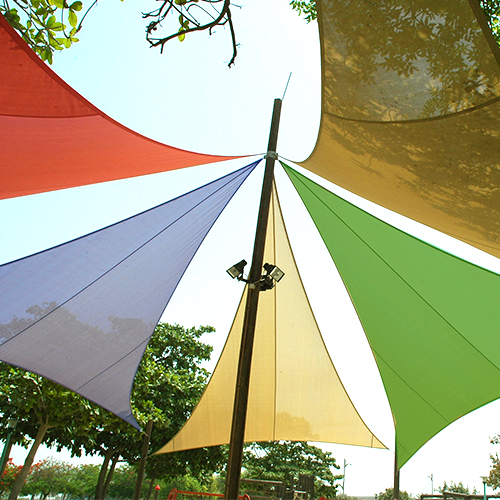Customer expresses intent; Communicate between the two parties; Provide analysis reports to customers; Reach a cooperation intention.
Shade cloth and sun blind are both materials used for shading and protection, but they have some significant differences in materials, application scenarios, and functions. The following is a detailed comparison between shade cloth and sun blind:
Material:
Shade cloth:
Material type: mainly made of high-density polyethylene (HDPE) or polyester.
Structure: Usually knitted or woven, with good breathability and durability.
Features: UV resistant, waterproof, tensile resistant, and wear-resistant.
Sun blind:
Material type: It can be made of various materials, including fabric, PVC, bamboo, aluminum alloy, etc.
Structure: Mostly designed for roller blinds, blinds, or Roman blinds, with flexible adjustment functions.
Features: Heat insulation, shading, UV protection, and some materials also have waterproof and flame retardant functions.
Application scenario:
Shade cloth:
Agriculture: Used to cover farmland and greenhouses, protect crops from excessive sunlight and high temperatures, reduce water evaporation, and control temperature.
Horticulture: used to protect flowers, shrubs, and trees, providing a cool growing environment.
Outdoor facilities: Used for providing extensive shading on terraces, balconies, parking sheds, amusement parks, etc.
Animal breeding: providing shade and cooling for outdoor animal sheds.
Sun blind:
Indoor: Installed at windows, balcony doors, etc., to regulate indoor light and temperature, protect privacy, and decorate the indoor environment.
Outdoor: Used for outdoor balconies, terraces, or pavilions, providing shade, wind resistance, and aesthetic effects.
Commercial premises: Used in offices, shops, restaurants, etc., to improve work and customer experience by adjusting lighting.
Function:
Shade cloth:
Sun blind: Provides extensive shading, blocks direct sunlight, and lowers temperature.
Breathability: allows for air circulation and prevents heat accumulation.
Weathering resistance: able to resist various climatic conditions, including strong sunlight, rain, and wind.
Sun blind:
Light control: The amount of light entering the room can be flexibly controlled by adjusting the angle or rolling degree of the curtain.
Insulation: Effectively blocking heat from entering the room and keeping it cool.
Privacy protection: Prevent external vision from entering the room and protect privacy.
Decoration effect: Multiple colors and styles to choose from, enhancing the interior decoration effect.
Installation and maintenance:
Shade cloth:
Installation: It needs to be fixed on a bracket, frame, or rope, and is usually used for covering larger areas.
Maintenance: Regularly clean and inspect, and avoid moisture and direct sunlight when storing.
Sun blind:
Installation: It can be installed inside and outside windows or door frames, fixed with rollers, tracks, or brackets, making installation relatively simple.
Maintenance: Regular cleaning of dust is required, and some materials can be wiped with a damp cloth. The mechanical parts of the curtain also need regular inspection and maintenance.
Shade cloth and sun blind each have their own advantages in function and application. Shade cloth is more suitable for large-scale outdoor shading and agricultural protection, emphasizing weather resistance and breathability. Sun blinds are more suitable for indoor and small outdoor areas, emphasizing light control, insulation, and decorative effects. Choosing suitable shading products based on specific needs can better achieve the goals of shading and protection.
 English
English 日本語
日本語 русский
русский Español
Español







 浙公网安备 33068302000509号
浙公网安备 33068302000509号